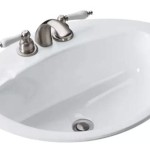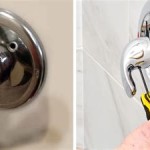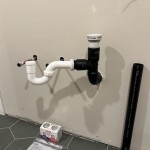Bathroom Faucet Handle Won't Turn: Troubleshooting and Solutions
A malfunctioning bathroom faucet can be a frustrating and inconvenient issue. When a faucet handle refuses to turn, it disrupts your daily routine and can even signal a more significant plumbing problem. Understanding the common reasons behind a non-functioning faucet and the steps to resolve the issue can save you time, effort, and potentially costly repairs. This article provides a comprehensive guide to diagnosing and addressing a bathroom faucet handle that won't turn.
1. Identify the Cause: Common Culprits
The inability of a faucet handle to turn can stem from various causes, each requiring a specific approach for resolution. One of the most common issues is a buildup of mineral deposits, commonly known as limescale or hard water deposits. These deposits can accumulate over time, obstructing the smooth movement of the handle and impeding water flow.
Another potential culprit is a worn-out cartridge or O-ring. These essential components are responsible for controlling water flow and preventing leaks. When these parts deteriorate, they can lead to a stiff handle that won't turn or leaks around the handle.
Furthermore, internal malfunctions within the faucet mechanism, such as a broken handle stem or a stuck internal valve, can also prevent the handle from turning. These issues often require more complex repairs, potentially necessitating the assistance of a qualified plumber.
2. Troubleshooting Steps: Addressing the Issue
Before resorting to professional help, it is advisable to troubleshoot the problem yourself. This often involves simple steps that can resolve basic issues and prevent further damage.
Start by removing the faucet handle. This typically involves unscrewing the handle from the faucet body. Once removed, you can inspect the handle stem and the surrounding area for any visible debris or mineral deposits. If present, use a small brush or a toothbrush to remove the buildup.
If the issue persists, you may need to investigate the internal components. Carefully remove the cartridge or O-ring and inspect them for wear and tear. If they appear worn or damaged, they should be replaced.
Lastly, examine the internal valve for any obstructions or signs of damage. If you encounter loose or broken parts, it is recommended to contact a professional plumber for assistance.
3. Preventative Measures: Keeping Your Faucet Functional
Maintaining a functional bathroom faucet involves preventative measures that can help avoid future issues related to a non-turning handle. Regular cleaning plays a crucial role in preserving the faucet's smooth operation.
Wipe down the faucet handle and surrounding areas regularly with a damp cloth to remove dust and debris. Performing a more thorough cleaning every few months involves using a mild cleaning solution to remove mineral deposits and prevent their accumulation.
Additionally, consider using a water softener to minimize hard water buildup. This can significantly reduce the risk of mineral deposits obstructing the faucet mechanism and hindering the handle's functionality.
Implementing these preventive measures can significantly extend the lifespan of your bathroom faucet and minimize the need for costly repairs.
Remember, if you are uncomfortable performing any of the above steps or the issue persists, it is recommended to contact a qualified plumber. They can provide expert diagnosis and repair services to ensure the functionality and longevity of your bathroom faucet.

Faucet Handle Hard To Turn

How To Fix A Hard Turn Bathroom Faucet Handle

Bathroom Handle Stiff Or Difficult To Operate

How To Fix A Tap Handle That Won T Turn On The Plumbette

How To Tighten Faucet Handle Homeserve Usa

How To Fix A Hard Turn Faucet Handle So Easy The Frugal Girls

What To Do If Your Faucet Handle Is Hard Turn

Bathroom Faucet Handle Sticking And Hard To Turn Easy Fix Delta

American Standard Tub Faucet Handle Stuck On Stem Doityourself Com Community Forums

My Kitchen Faucet Won T Turn Off







